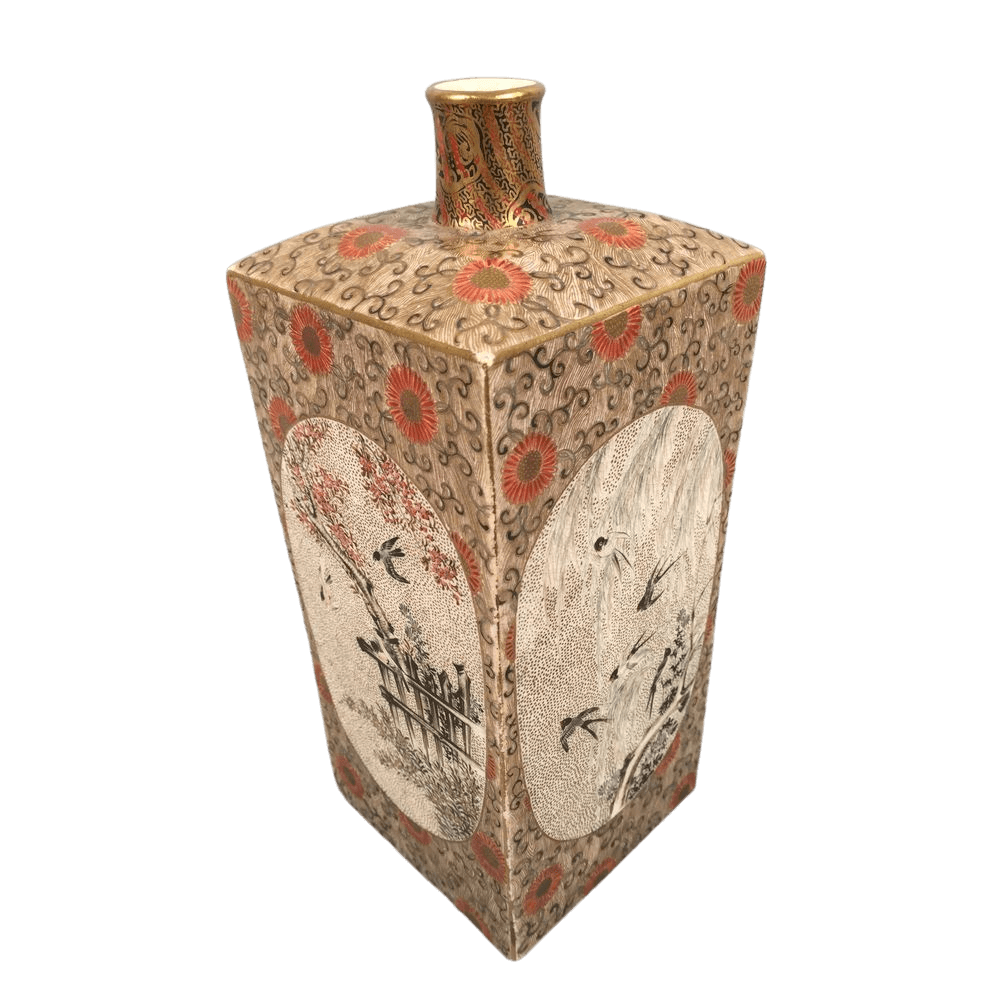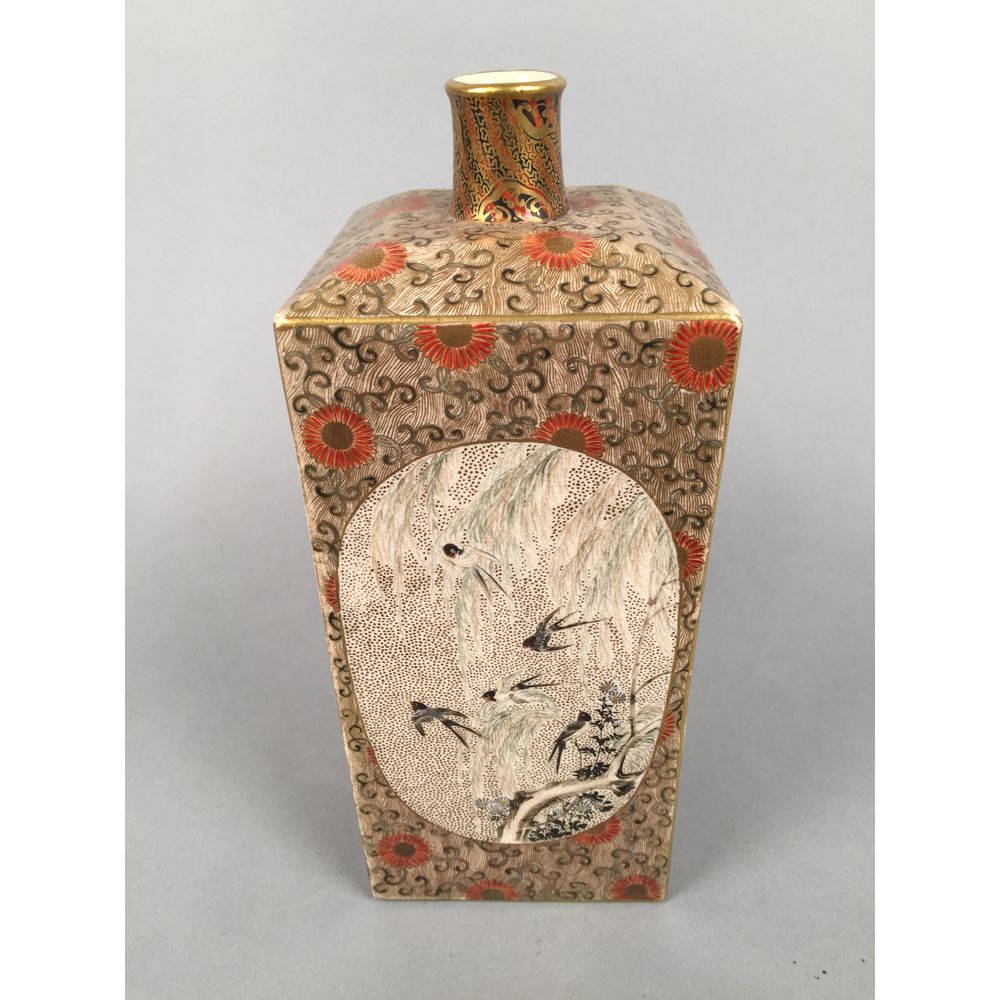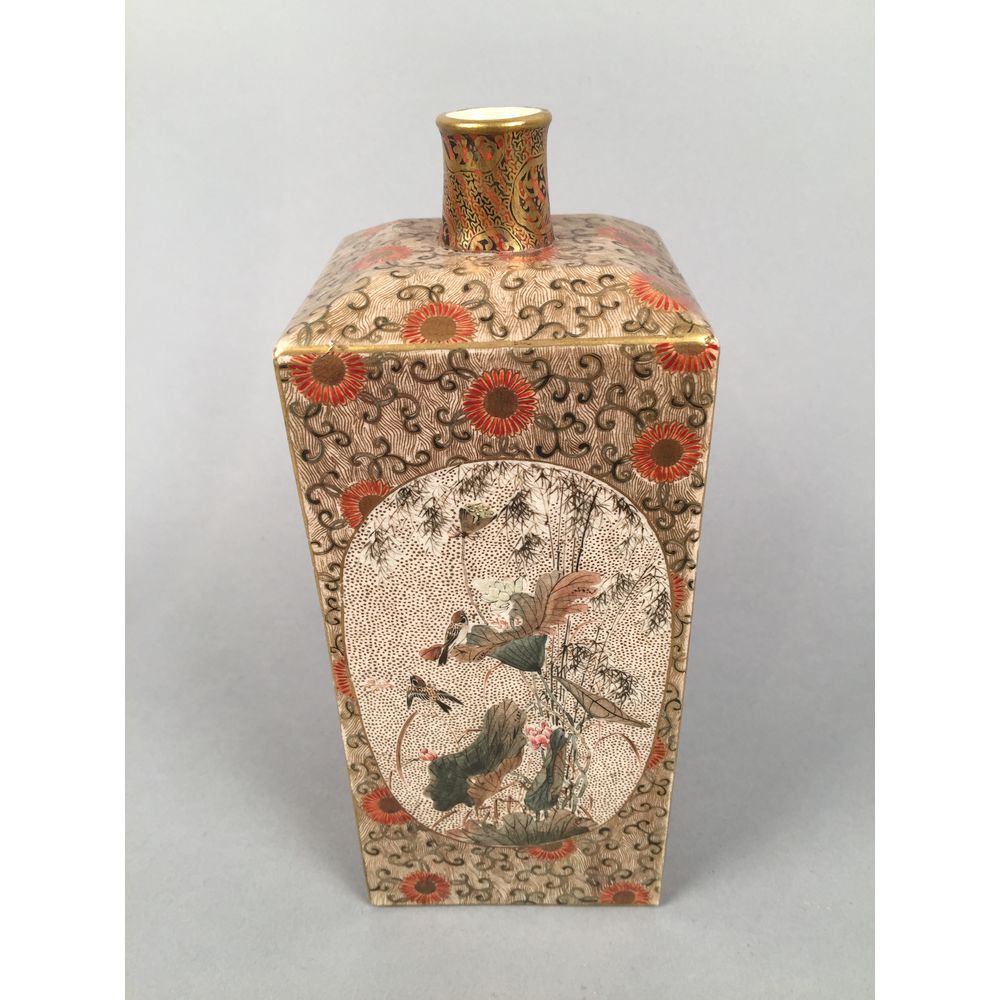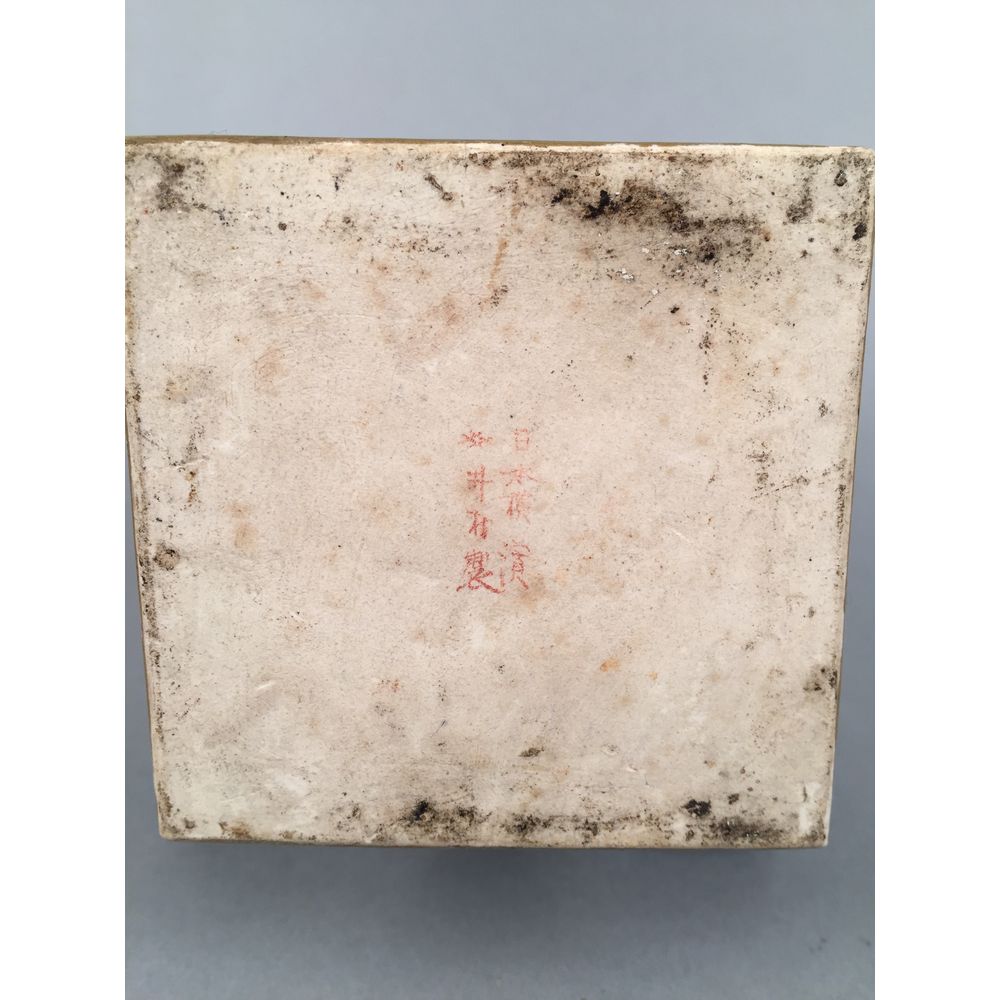Description
Signed Japanese Satsuma square bottle vase – Meiji period 1868-1912 – Yokohama
Of very fine quality and in perfect condition. Beautifully detailed swallows set in landscapes.
(The decipherable characters to the base are Japan, Yokohama, exhibition, an emblem and village. Only one character is indistinct.)
H: 8 1/4″
W: 3 1/2″
D: 3 1/2″
Satsuma potters are believed to have been working as early as 1600 – little of this period survives. However bone bodied Satsuma ware originated, and reached its highest refinement, in the late Meiji 1868-1912, in SW Japan.
This superb earthenware pottery was decorated with exquisite, romantic subjects so favoured by the Japanese including chrysanthemums and peonies, blossom, kimono clad figures, birds, exotic animals, rocky landscapes, lakes etc.
Small scale signed bottle vases of square form in perfect condition are rare and much sought after by collectors.
A Meiji satsuma small scale kinkozan bottle vase was sold for £2,500 Bonhams March 2013.
Ref:
Pollard, Clare (2006) “Gorgeous with Glitter and Gold: Miyagawa Kouzan and the Role of Satsuma Export Ware in the Early Meiji Ceramic Industry”. In Conant, Ellen P. Challenging Past And Present: The Metamorphosis of Nineteenth-Century Japanese Art, Honolulu: University of Hawai’i Press, pp. 134–147. ISBN 0824829379
Jahn, Gisela (2004) Meiji Ceramics: The Art of Japanese export Porcelain and Satsuma Ware 1868-1912, Stuttgart: Arnoldische. ISBN 3-89790-197-8
Japanese Ceramic Styles – Victoria and Albert Museum (V&A)
www.vam.ac.uk/content/articles/j/japanese-ceramic-styles
Japanese Ceramics Reading List – Victoria and Albert Museum
www.vam.ac.uk/content/articles/j/reading-list-japanese-ceramics










